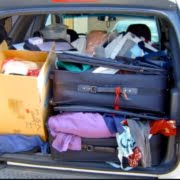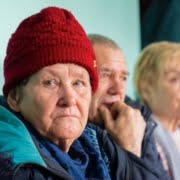When Julia Child met Betty Friedan
There is an excellent TV series ‘Julia’ now streaming about Julia Child, the multi-award winning American chef. With a first-rate cast led by Sarah Lancashire as Julia and an intelligent script, the series focuses on Julia’s battle to put her cooking show on American television in 1963. From our perspective today this doesn’t appear to be a big deal. But it was. Remember, feminism didn’t really become a major movement until the late 1960s and 1970s. Before that, women were pressured not to enter the workforce if they had someone to support them, not to enter the universities and not to pursue careers. Ruth Bader Ginsburg could not get a job in a law firm.
Betty Friedan in her book ‘The Feminine Mystique’ published in 1963, captured the alienation of women of the era excluded from the workforce and confined to their homes. It lit the flame of feminism. There is a pivotal scene in this ‘Julia’ series when Julia meets Betty. It is at a gala event and Julia has just achieved recognition for the great success of her cooking show ‘ The French Chef ‘ on public television.
Friedan berates Julia for reinforcing the traditional roles of women and forcing them to spend even more time in the kitchen cooking her complicated dishes. Julia is so struck by this argument that she decides to end her TV cooking series.
Does Friedan have a point? Well, we don’t know what the real Betty Friedan would have thought, but the Friedan character in the series does correctly identify that domesticity and cooking at the time seemed to represent the antitheses of feminism.
But she overlooks the ground-breaking achievements of Julia who actually embodied feminism – the right of a woman to pursue her passion and ambitions, develop a profession and even reach the pinnacle of a career.
Let’s place things in context. Television in America and elsewhere in the 60s was almost exclusively a male domain. The women who were permitted on screen were usually pretty, young, slim with perfectly sprayed hair. Julia was a 6 foot tall, large, ‘loud’ older woman, aged 51. She wanted to do a show about cooking when TV executives superciliously thought cooking was not a worthy subject for television.
Julia was very brave in charging into the local TV studio, convincing them and even paying for the entire production costs of the show – so determined was she to pursue her dream. Her talent and her personality made the show a commercial and popular success.
In addition to being berated by Friedan, Julia also cops it in the series from a top male chef. He condescendingly tells her that as a woman she cannot aspire to be more than a cook, an amateur, and that only males can be professional chefs.
Julia didn’t have a feminist movement supporting her, but she did have a close network of female friends whom she called her “ Confederacy of Women. An oestrogen safety net.” We all need one.










